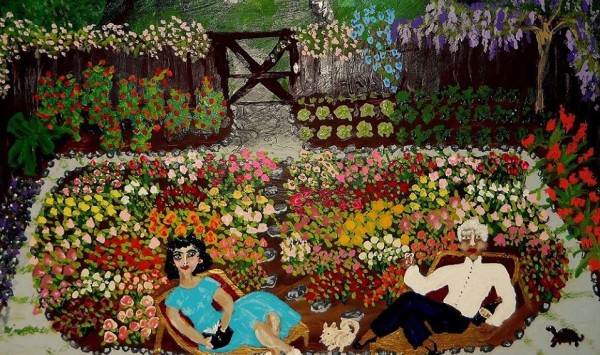FINDING HISTORICAL PICS OF YOUR NYC BLOCK
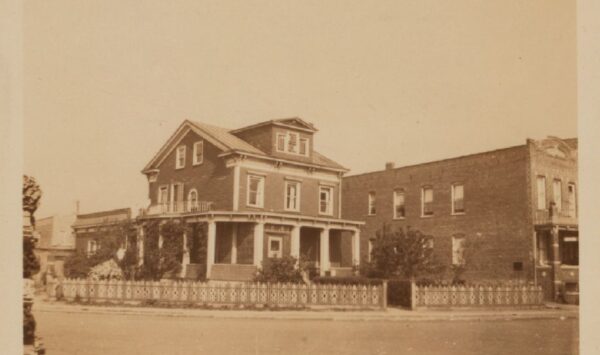
******************************************************************************************************************************** Brownstone Detectives investigates the history of our clients’ homes. The story you are about to read was composed from research conducted in the course of one of those investigations. Do you know the history of YOUR house? ******************************************************************************************************************************** Have you ever wondered what your block looked like 100 years ago? Well, now’s your chance to find out! Using a new website called OLDNYC, the opportunity is yours to try and locate historic New York City photos by location. The project, created by Dan Vanderkam in collaboration with the New York Public Library (NYPL), makes historic photographs (all pre-loaded and locate-able by an interactive map of the city) accessible by using a map. To find pics from your neighborhood, simply locate your neighborhood or street on the map and look for the red dots – which indicate that there are pictures available for these locations. The top right snapshot is one that we found of a row of houses near the intersection of Saratoga Avenue and Decatur Street, in the Ocean Hill section of Bedford-Stuyvesant. Below that is what this stretch of block looks like today. Vanderkam describes his site as “an alternative way of browsing the NYPL’s incredible Photographic Views of New York City, 1870s-1970s collection.” “Its goal,” he continues “is to help you discover the history behind the places you see every day.” Quite an admirable offering and a great way to access NYPL’s extensive collection of old photographs. This is going to be a valuable website for […]
A MORBID MYSTERY IN PARK SLOPE (1940)
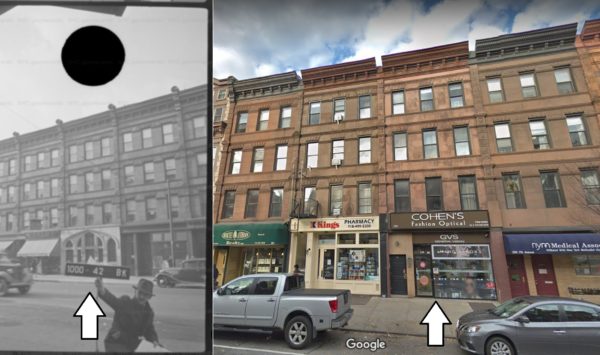
******************************************************************************************************************************** Brownstone Detectives investigates the history of our clients’ homes. The story you are about to read was composed from research conducted in the course of one of those investigations. Do you know the history of YOUR house? ******************************************************************************************************************************** When researching our clients’ properties we often come across some pretty outrageous stories, fantastic histories, and some strangely enigmatic images. During a recent review of some of the city’s tax photos featuring properties in Brooklyn from the 1940s, we came across this very interesting, yet certainly fleeting (it no longer exists), architecture constructed into a storefront on Brooklyn’s Seventh Avenue (see the left side of the photo above). It is apparent, from the rest of the neighboring storefronts, that No. 298 Seventh Avenue’s facade had been altered at some point, but to what end? The modified storefront projected a very gothic image that told passersby that something very different – and important – was going on within the building. We wondered was it a chapel, a little church, a museum? Unfortunately, the resolution of the city’s tax photos are often too grainy to make out much detail, so we had to look elsewhere for answers. We, thus, resorted to the archival images of Brooklyn newspapers to determine what had existed at No. 298 in the 1930s/1940s. When the following image popped up in our search results, all was made clear. No. 298 Seventh Avenue was a second-to-final destination for many Park Slope Brooklynites: Follow @BrownstoneDetec Share ———————————————————————————————————————– The Brownstone Detectives Brownstone […]
PVT. EDWIN RUOFF (A BEDSTUY HERO) (1918)
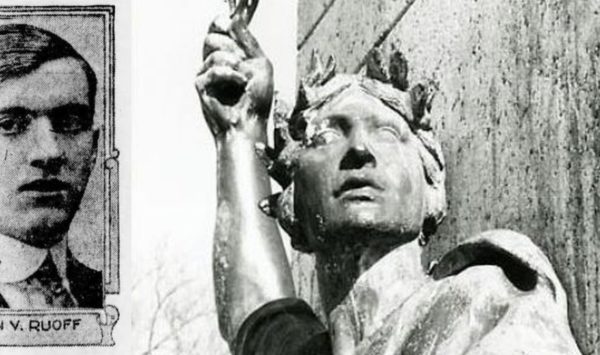
******************************************************************************************************************************** Brownstone Detectives investigates the history of our clients’ homes. The story you are about to read was composed from research conducted in the course of one of those investigations. Do you know the history of YOUR house? ******************************************************************************************************************************** In 2014, The Brownstone Detectives partnered with the New York City Parks Department to help celebrate the lives of the servicemembers of Bedford-Stuyvesant Heights who made the ultimate sacrifice during the Great War. We researched these heroes to locate pictures, stories, and their descendants to be brought together for a ceremony that dedicated a new “Victory and Peace” war memorial at Saratoga Park. This biography tells the story of one of those servicemembers. PVT. EDWIN V. RUOFF Before being drafted into the U.S. Army to fight in the Great War, Private Edwin V. Ruoff was a resident of Stuyvesant Heights where he lived at 193 Ralph Avenue. He was killed in an accidental bomb explosion on 3 June 1918 in France, when a supposedly harmless shell went off. The explosion, which took the lives of 45 soldiers in total, occurred when the company was drilling. It all started when one of the men discovered the “bomb or hand grenade” and “began fooling with it.” Then, “after tossing it about and whirling it around, he let it drop. As the missile hit the ground, there was a terrific explosion, the force of which threw almost every member of the company to the ground.” THE ARMY VISITS MRS. RUOFF According to the Brooklyn […]
THE CRUMBLING OF MACON & MALCOLM
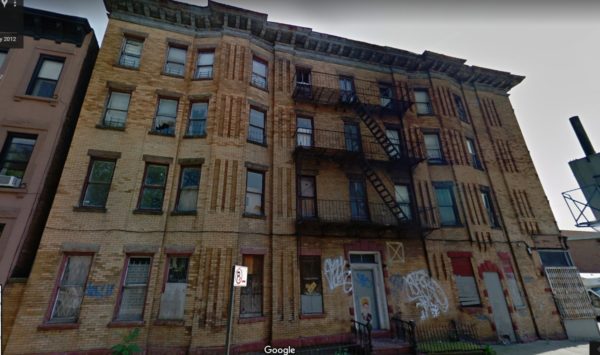
******************************************************************************************************************************** Brownstone Detectives investigates the history of our clients’ homes. The story you are about to read was composed from research conducted in the course of one of those investigations. Do you know the history of YOUR house? ******************************************************************************************************************************** (This post has been updated as of 8 February 2021.) The apartment building at the corner of Malcolm X Boulevard and Macon Street, No. 265 Malcolm X Blvd/546 Macon Street, which was constructed ca. the 1890s, has experienced an increased deterioration in the past 20 years. Although we don’t have a current snapshot of the building, the Department of Buildings notes that there is a sidewalk shed there, the existence of which was likely due to a failure to maintain building (i.e., falling glass, mortar, cornice, &c.). The building is currently owned by the Mission Field Church. The property has 12 complaints and 33 open violations. See in pictures how the structure has deteriorated over just the past ten years. Follow @BrownstoneDetec Share ———————————————————————————————————————– The Brownstone Detectives Brownstone Detectives is an historic property research agency. Our mission is to document and save the histories of our clients’ homes. From our research, we produce our celebrated House History Books and House History Reports. Contact us today to begin discovering the history of your home.
TIMEWARP TUESDAY! DEAN ST. (1905 v. 2014)
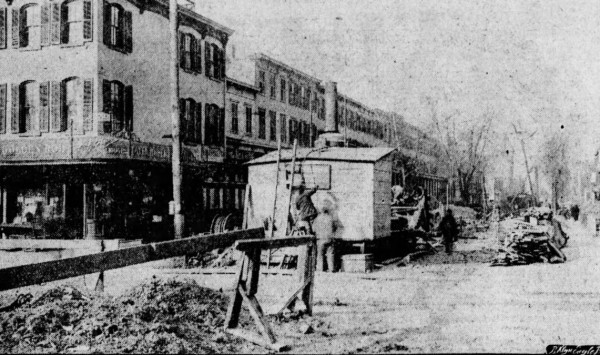
******************************************************************************************************************************** Brownstone Detectives investigates the history of our clients’ homes. The story you are about to read was composed from research conducted in the course of one of those investigations. Do you know the history of YOUR house? ******************************************************************************************************************************** Back in late 1904/early 1905, people living on Dean Street, from Third to Fifth avenues, and on Fifth Avenue, from Dean Street to Flatbush Avenue, were “complaining bitterly of the condition of the streets, which have been torn up for a number of months. “The sidewalks are covered with dirt and rubbish and traffic is delayed seriously.” Pictured is the intersection at Dean Street and 4th Avenue – in 1905 and in 2014. Can you spot the differences between the two pictures? Follow @BrownstoneDetec Share ———————————————————————————————————————– The Brownstone Detectives Brownstone Detectives is an historic property research agency. Our mission is to document and save the histories of our clients’ homes. From our research, we produce our celebrated House History Books and House History Reports. Contact us today to begin discovering the history of your home.
THE “GOODFELLAS” OF CUMBERLAND STREET
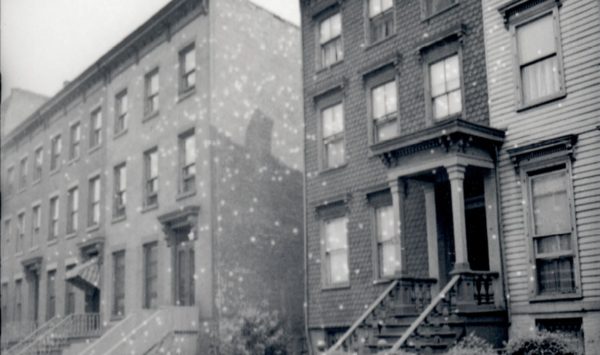
One of the Brownstone Detectives’ first House History Books, No. 231 Cumberland Street: The Story of a House, tells the story of an 1852 antebellum frame home just steps from Fort Greene Park. It’s an action-packed tome, replete with treachery, “poudrette,” “small art,” SROs, and the gangland figures from “Goodfellas.” Here is a brief timeline of the history of this single landmarked property, matched up with “spreads” from the book: THE HISTORY OF A BROOKLYN HOUSE The land beneath which No. 231 would someday rise, started out as a tobacco farm owned by the first Italian immigrant to New York, Pietre Cesare Alberti. The farmland would eventually be built upon in 1851-2, when builder John Ross constructed a row of three homes there. First owned by a woman with a tragic history, a melodrama involving treachery, another man, and an infant daughter – which became the gossip of the newspapers of the time – No. 231 was rented out throughout the the 1850s and 1860s, in addition to many returning Civil War veterans, to merchants and their small families. One of those merchants featured prominently in the founding of the Lafayette Avenue Presbytery Church. Before this, however, he had begun his interesting career as a Night Soil Man – starting a company which, amongst other “agricultural” endeavors, collected human excrement from the backyard privvies of Brooklyn, selling this “compost” to Long Island farmers as the appropriately – if euphemistically – named “poudrette.” The property was then owned by an immigrant, […]
SURVIVING THE ATLANTIC AVENUE “CUT” (1920)
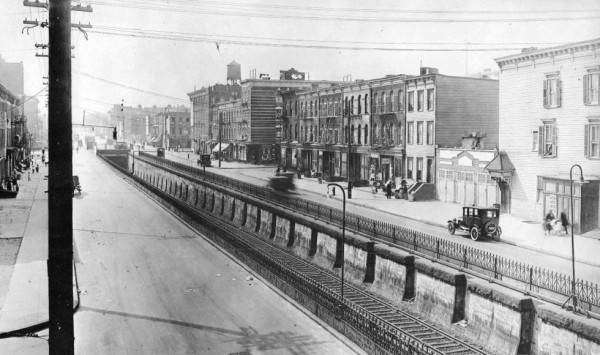
O! What a difference 90 years makes. The Long Island Rail Road (L.I.R.R.) “Cut,” which divided the eastward and westward sides of Atlantic Avenue, was a much more scenic feature back in the day. In this photograph taken looking eastward from Howard Avenue, a small family walks with a baby carriage at the lower right, and a woman, above them, looks out of the window. Shoppers along with residents of the houses fill the sidewalks, as they run errands, talk with one another, and take in the streets scenes, themselves. These scenes were representative of the entire stretch of the avenue of the time. As the automobile came into prominence, though, and repair shops and filling stations began congregating along the avenue, the people began to disappear, along with their residential buildings, the latter of which were really not that old at the time. Sadly, none of these buildings appear to be standing today. Notice the number of ornate Victorian-era wood-frame houses that were in existence then. Also, notice the cast-iron fencing that the L.I.R.R. used to keep pedestrians from falling – and drivers from plunging – down into the “cut.” Unfortunately, for a number of motorists driving in the direction of the tracks, this fencing was of little help. With the low height of the old cast iron fence that lined the “cut,” many night-time drivers had a difficult time realizing – as they perpendicularly approached the “cut” in the dark – that there was actually no path between […]
BROWNSTONE DETECTIVES IN THE NY POST!
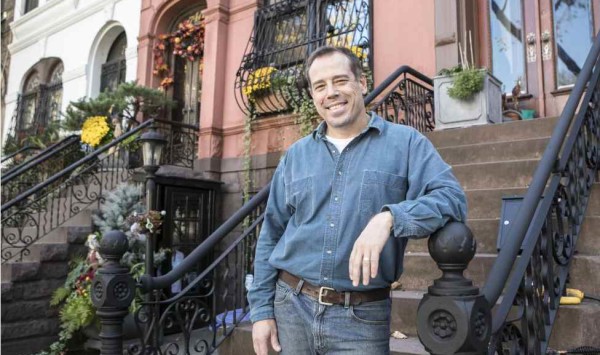
“Because Brooklynite Brian Hartig delves into the history of old New York homes every day, he comes across a few ghost stories,” wrote New York Post writer, Emily Nonko. Hartig, who creates House History Books containing the full histories of his clients’ Brooklyn houses, was told recently that his house was haunted by a benign spirit. (Read the rest of the story at the New York Post website.)

